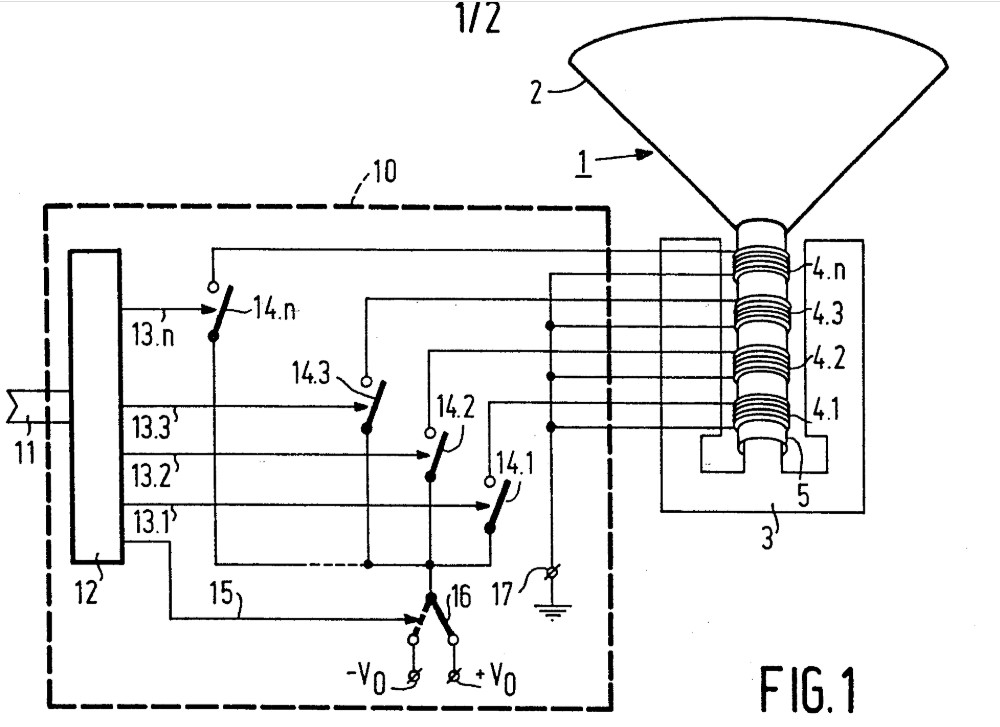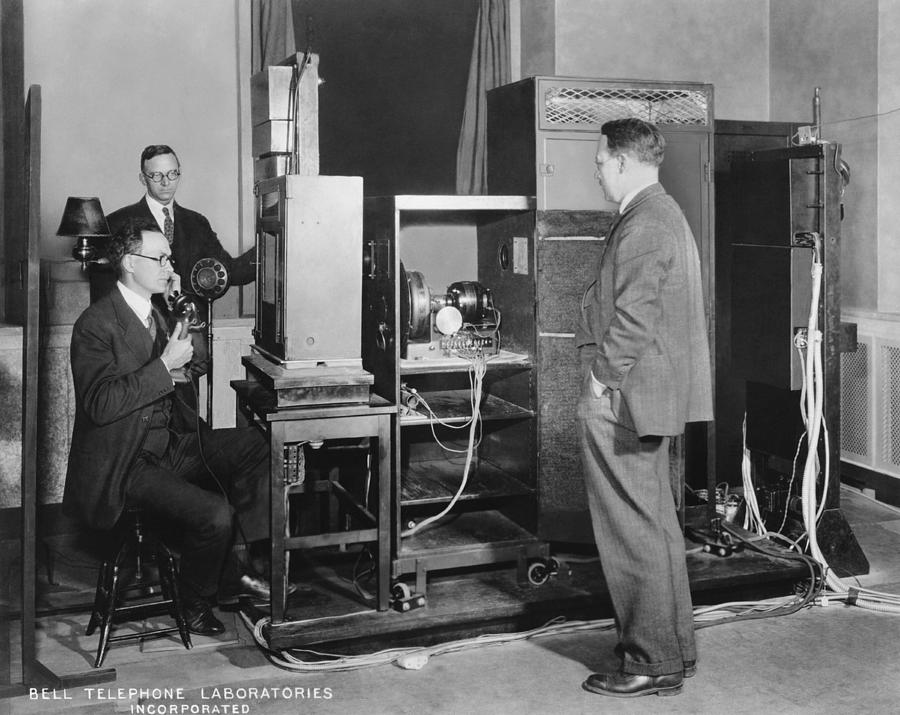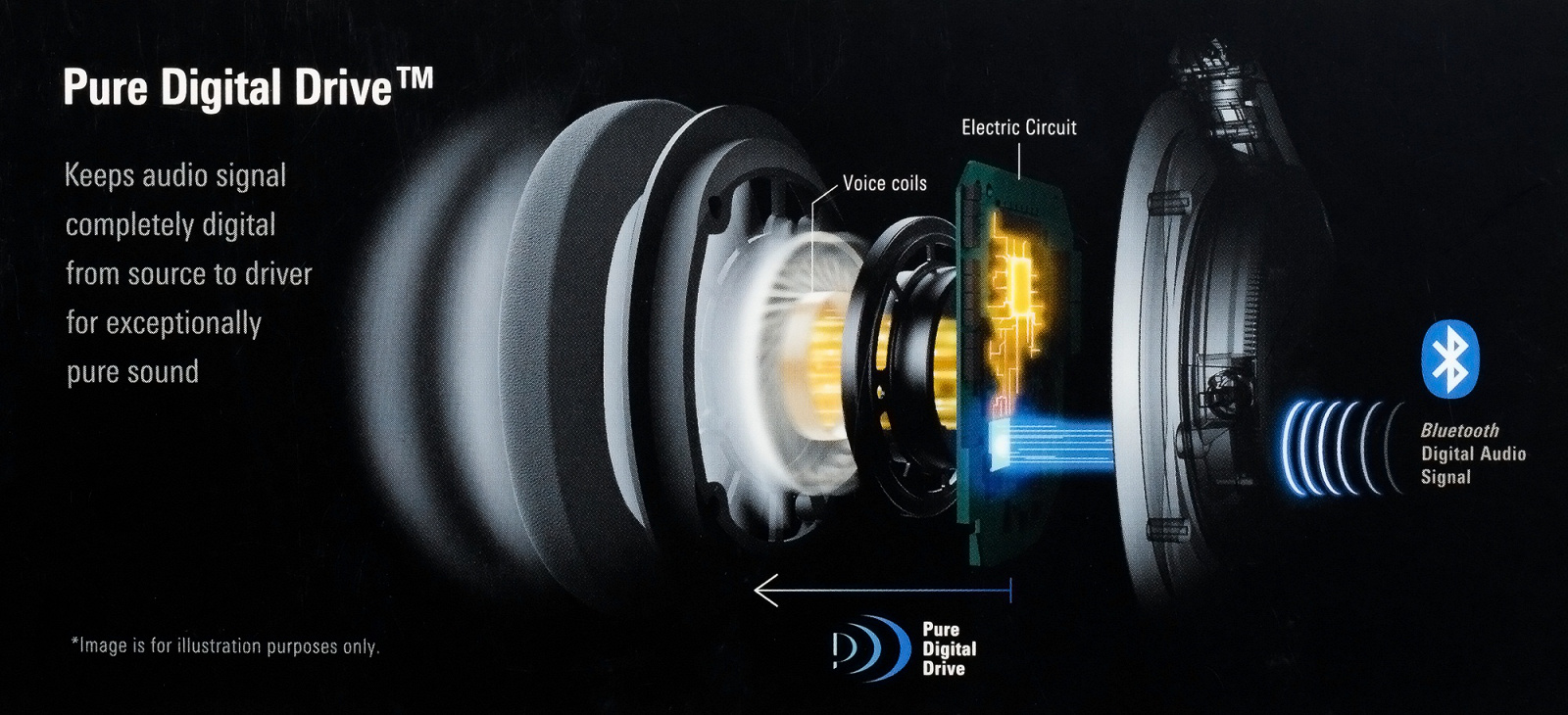
At the same time, digital emitters of various types have been produced in limited quantities for a long time. The latter are little known to a wide range of consumers, are expensive and are used relatively rarely. Further, a brief history of digital sound emitters, the devices in which they were used and applied, as well as considerations about their prospects.
Prerequisites for the emergence
Since the mid-20s, the undivided dominance in electroacoustics has remained with the electrodynamic loudspeaker, in its various variations. Neither electrostats, which at first burned great, disrupting the sessions of the first sound films in the 30s, and then became simply fabulously expensive, could not squeeze it out. No ionophones that are not capable of adequate bass reproduction. Neither piezoelectric emitters that could not withstand competition due to the small frequency range.

burnt out coil of the subwoofer speaker
At the same time, the speakers can hardly be called a technically perfect solution. So, for tweeters, the coil temperature of 100 degrees Celsius is not the limit, the efficiency for this reason rarely exceeds 1%, and the temperature of the woofer coil of dynamic drivers can easily exceed 150 or even 200 degrees, when operating at rated power. Distortions, both frequency and non-linear, require correction or technologies that will significantly reduce them. A similar story occurs with the transient response, which in expensive solutions makes you constantly chase a large frequency range, which, ideally, should go well beyond the spectrum audible to the human ear.
But, despite all the shortcomings of the speaker, it was he who became the most demanded in terms of the combination of advantages. At the same time, tireless researchers did not stop looking for something more productive, energy efficient, and also more manageable. Engineers began looking for a way to convert digital signals to sound directly, without using a DAC.

Bell Labs acoustic experiments in the 1920s
In theory, digital speakers were first described by Bell Labs back in the 1920s. Their principle was simple enough. The least significant bit controls the speaker, in which the value “1” drives it with a maximum amplitude, the value “0” completely stops the signal. Further, the least significant bit doubled the initial radiation area, the next bit doubled its area, etc., in accordance with the number of bits. In the 20s there was no urgent need for this type of conversion of digital signals into sound, and theoretically, the works laid the table for many years.
Bell Speaker
In earlier versions, the radiation area of the next bit was located concentrically around the segment of the previous bit, but this rule is not mandatory. Theory was first put into practice in 1980. Bell Lab also became the developer. It was a disc-shaped electrode on which a thin film membrane was fixed. The electrode was divided into isolated segments, with the area ratio described above, by the number of discharges 4.3, 2.1.0. The segments were excited with a digital rectangular signal, in accordance with its value.
For telephone communications fidelity of reproduction was enough, but this radiator was unsuitable for reproduction of music. The fact is that in order to obtain sufficient loudness, the area of the corresponding radiator in the form factor of the speaker system was unacceptably large. Conversion distortions were also a problem, which in classical DACs can be eliminated using filters. But in digital emitters, their use is impossible, since the conversion occurs directly and they are the final link in reproduction.
Japanese experiments
The next stage in the development of digital sound emitters was the creation of electret and piezoelectric digital loudspeakers by SONY. The principle of operation was not very different from that used at Bell Lab, but the design was different. The electrodes of such emitters were concentric sections with equal area. The sections were connected in groups, the number of groups depended on the capacity of the emitter.
A fundamentally different method of dividing sections of a digital loudspeaker was proposed by engineers at Matsushita Electric Corporation (today Panasonic Corporation). In the patents, which are still owned by the company, it is proposed to combine the segments emitting sound into groups in accordance with the weight coefficient of the discharge.
None of the developments described in the section were developed due to the cost of production, high distortions, low manufacturability, and other specific problems of newborn technology.
Digital speakers
Attempts to create an electrodynamic digital emitter began almost immediately after the appearance of piezo and electret loudspeakers of this type. The problems of the latter consisted in a narrow frequency range and a kind of frequency response, which did not allow them to be used effectively anywhere, except for communication devices for voice and HF sections of speakers.

drawing from a Philips patent Philips
and Sony began experiments on creating a digital speaker back in 1982. The principle was that the number of coils in the emitter increases, while the number of sections corresponds to the capacity. The result was a Philips patent No. 4612420 , shortly before that, No. 58-31699 was registered in Japan, showing a similar design for a digital speaker.
The multi-coil digital speaker can be considered to be one of the longest lived variants of a digital driver. The last mention of a similar development dates back to 2000, when a similar principle was applied by B&W, the flagship of the audiophile development.
University piezo emitters
In addition to electronics corporations, the digital emitter theme has been actively developed in universities. A group of scientists from Shinzu University in Nagano in the 1990s focused on creating piezoelectric digital speakers. They got their first result in 1993, and by 1999 they showed a radiator designed for a 16-bit signal with a sampling frequency of 48 kHz.
We can say that this development was the first digital emitter, the characteristics of which were sufficient for limited multimedia use. The characteristics of the device were as follows:
- Frequency range: 40-10000 Hz;
- Frequency response uneven within 4dB.
- THD 3.5% at 50 Hz and 0.1% at 10000 Hz
- Sensitivity 84 dB
Quantization noise and other artifacts of this type of digital-to-analog conversion associated with low bit depth in such emitters were strong enough to speak of any high fidelity of reproduction. It was obvious that loudspeakers of this type can be used in multimedia devices only to a limited extent, mainly for communication and sound alerts, but not for high-quality music playback.
Brighton lattice or Helsinki algorithm
The most memorable British scientists applied a fundamentally new principle. A group of researchers from the University of Brighton, with financial support from B&W, has developed a speaker in which they did not try to cram the digital emitter into one housing, but presented it in the form of a distributed array of many individual dynamic emitters that were combined into groups in accordance with the signal discharge. Thus, two directions were opened for the development of digital loudspeakers. The first is an increase in the quantization bit depth, which made it possible to reduce noise, and the second is a signal correction to compensate for distortions of dynamic (or other) emitters.
The creation of a new type of digital emitter has generated keen interest in the academic community. As a result, the Finnish company Audio Signal Processing Espoo and the University of Helsinki have created an algorithm that optimizes the operation of the Brighton sectional grille. The algorithm made it possible to align the phase and amplitude in the entire spectrum of reproducible frequencies. The algorithm also appeared in 2000.
The Digital Sound Projector
The developments described above were used by 1..limited to create The Digital Sound Projector, a device that was introduced in 2002. We can say that this is the first full-fledged product in the history of electroacoustics that uses a digital emitter to reproduce music with high fidelity.

Microprocessor manufacturers ARM Ltd, Cambridge Display Technology, an interdisciplinary scientific company, and Analog Devices, a chip manufacturer, took part in the creation of The Digital Sound Projector. Later, the small-scale production of the product was continued by Pioneer.
The device used 256 small emitters, each of which reproduced a single pulse. Like the pixels on the monitor, the system added up the big picture of many signals. The processor, in accordance with the Finnish algorithm, controlled the playback parameters and performed noise elimination and distortion compensation. The compensation process took into account both decoding artifacts and wave interference from various emitters.

One of the significant achievements was the efficiency, which reached 10%, which significantly exceeded the value of the classic analog speakers. The distributed controlled digital radiation principle has also significantly reduced harmonic and intermodulation distortion. Perhaps the most significant and obvious disadvantage of the system was its complexity, low manufacturability, and, accordingly, high cost. At the beginning of the 2000s, the world was not ready to accept something so complex and, obviously, it is not ready to accept until now. Tangible problems in the form of complexity and cost did not make the technology of mass gratings and buried it in the cemetery of ideas that did not shoot.
Modern stage of development
Despite the obvious difficulties, digital radiation technology has developed unexpectedly. So in 2015, the creation of a MEMS emitter was announced, which is based on the complementary metal-oxide-semiconductor (CMOS) structure. We got used to MEMS microphones and MEMS accelerometers, and now it's the turn of the loudspeakers.

MEMS emitters were announced by Audio Pixels, which said they are close to creating digital emitters that can outperform analog speakers. Limiters are the small amplitude, as well as the limitation of the low frequency range, which most innovators in the field of sound transducers face.

Another example of the use of digital emitters is the Audio-Technica ATH-DSR9BT headphones , which lack the usual DAC and are equipped with Pure Digital Drive digital loudspeakers. The manufacturer does not disclose the essence of the technology in detail, however, judging by the available information, this is the reincarnation of a digital speaker with many coils, however, unlike Philips emitters of the mid-80s, Pure Digital Drive operates with a multi-bit signal.

I do not know how the problems of ultrasonic radiation, quantization noise, and also the correction of distortions introduced by the mechanical parts of the device are solved. But, judging by the fact that the device is positioned as a wireless flagship of the company, there is a possibility that the solution is effective. It is also known that the speaker was created in partnership with Trigence Semiconductor.

Warm analog near future
I'll try to play Grandma Wang and summarize all of the above. The hope of digital radiation is MEMS, but it has formidable physical limitations that will limit their use to a predominantly wearable form factor. Another problem is the speed of development of MEMS technologies that make plans, as joking among developers, in the “dog years”, i.e. where other industries conditionally need a year, MEMS will take seven years.
Another issue is cost. And until manufacturability grows, the cost will not decrease, and it will not grow rapidly due to the already mentioned speed of MEMS development. Manufacturers are so fond of the simplicity and roll-back of the production of speakers that in order to change them for something, very weighty arguments are needed, and increasing the efficiency is clearly not one of them. Therefore, supporters of techno-archaic and other analog audiophile "steampunk" need not worry. Tube amplifiers, of course, will not return after the resurrected vinyl, but warm and even hot (in the literal sense) true-analog speakers will live another ten or two years. Unfortunately, the lot of digital loudspeakers today is still relatively expensive, rare experimental products and scientific research.
Used photos:
www.bluesmobil.ru/topic/15989-peremotka-katushki-nch-dina
www.ixbt.com/news/hard/index.shtml?01/15/67
www.ixbt.com/ds/audio-technica-dsr9bt-review.html
patents.justia.com/patent/4612420
audioxpress.com/article/MEMS-Microspeakers-Are-Truly-Digital-Transducers
www.ixbt.com/news/hard/index.shtml?01/15/67
www.ixbt.com/ds/audio-technica-dsr9bt-review.html
patents.justia.com/patent/4612420
audioxpress.com/article/MEMS-Microspeakers-Are-Truly-Digital-Transducers